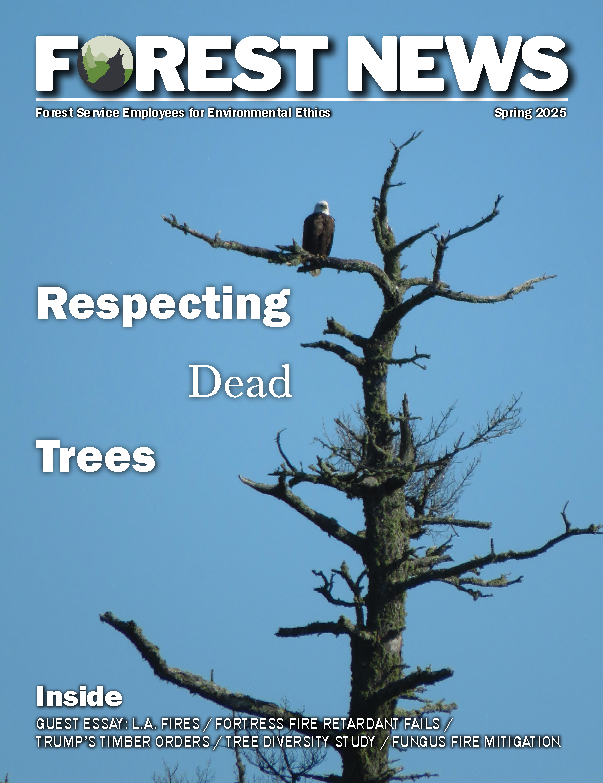Jordan Hansen, writing for The Daily Montanan, was the first to report on FSEEE’s latest aerial fire retardant lawsuit. Hansen acknowledges the USC study that provides the scientific basis for he lawsuit. “A study by the University of Southern California estimates hundreds of thousands of pounds of toxic metals have been dumped onto forests during aerial fire retardant drops during the past decade.”
“This stuff is astonishingly dirty. … Why the hell are we using such a dirty retardant?” Hansen quotes FSEEE Executive Director Andy Stahl.
As Hansen notes, FSEEE is seeks “acknowledgement and disclosure of the toxic metals being used, as well as biological opinions from other agencies assessing the impact of the fire retardant on threatened and endangered animals,” which is why the National Marine Fisheries Service and the U.S. Fish and Wildlife Service are also named in the lawsuit.
In discussing the research done by USC, Stahl told Hansen, “They’re the ones who have really blown open this issue that retardant, the Phos-Chek retardant, contains astonishingly high levels of heavy metals like cadmium,” Stahl said. “We’ve suspected that for years.”
Hansen also spoke with Jack Cohen, “a retired U.S. Forest Service fire research scientist with decades of fire experience.” Cohen said he doesn’t think aerial fire retardant works, calling it “just about the most expensive, least effective mechanism of fire suppression.”
Cohen mentioned FSEEE’s previous retardant lawsuit, in which we proved that retardant is polluting water in violation of the Clean Water Act:
“The judge admitted that that was happening and essentially decided against withholding the use of the retardant based on the statement, something on the order of, it is conceivable that greater harm to the environment, people and their property would occur without using fire retardant, and that assumes that fire retardant is effective. … To me, that’s very troubling.”


